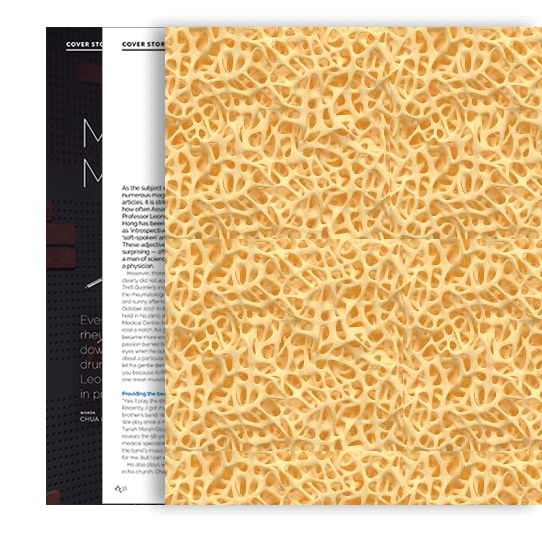

This dreaded disease causes the bones to become brittle, especially those at the wrist, spine and hip. The bones become so brittle that even a simple fall, cough or stretch can cause a fracture.
Throughout our lives, our bones are alive and in a constant state of regeneration.
Old bone is broken down, and new bone is generated. This process happens at a faster pace when we are young – new bone is made faster than old bone is broken down, so our bone mass increases. We hit a bone mass peak sometime in our early 20s. Conversely, as we age, we lose old bone faster than new bone is generated.
The likelihood of developing osteoporosis depends partly on how much bone mass you attained in your youth. The higher your peak bone mass, the more bone you have ‘in the bank’ and the less likely you are to develop osteoporosis as you age.
All you need is to drink milk and take calcium tablets and you will be OK
Fact
It is recommended that calcium comes from a combination of dairy products, dark green leafy vegetables, canned salmon or sardines with bones, soy products and calcium-fortified cereals and orange juice. This must include vitamin D that helps the body absorb calcium, along with exercise and precautions against falls.
There is no treatment as it is a natural part of ageing
Fact
It can be prevented with the right lifestyle habits in place from a young age, and can be treated if caught early enough.
There are risk factors which can be managed:
Hormones
Too much thyroid or too little sex hormones can lead to weakened bones and bone loss.
Dietary Issues
Low calcium intake, eating disorders and gastrointestinal surgery can result in weakened bones and osteoporosis.
Medication
Steroids and other long-term medications negatively affect the body’s bone-building process.
Lifestyle Choices
Lack of physical activity, alcohol intake and smoking contribute to osteoporosis.
Some risk factors are not modifiable:
Symptoms
There are usually no symptoms in the early stages, but once bone loss has reached a significant level, the symptoms include:
How to prevent it
By taking simple but concerted steps:
Bone fractures, particularly in the spine or hip, are the most serious complication of osteoporosis.
Hip fractures often result from a fall and can result in disability and even death from post-operative complications, especially in older adults. Some 20% of hip fracture patients die in the first year and half lose their independence.
In some cases, spinal fractures can occur even if you haven’t fallen. The bones that make up your spine (vertebrate) can weaken to the point that they may crumple, which can result in back pain, lost height and a hunchedforward posture.
The likelihood of developing osteoporosis depends partly on how much bone mass you attained in your youth. The higher your peak bone mass, the more bone you have ‘in the bank’ and the less likely you are to develop osteoporosis as you age.